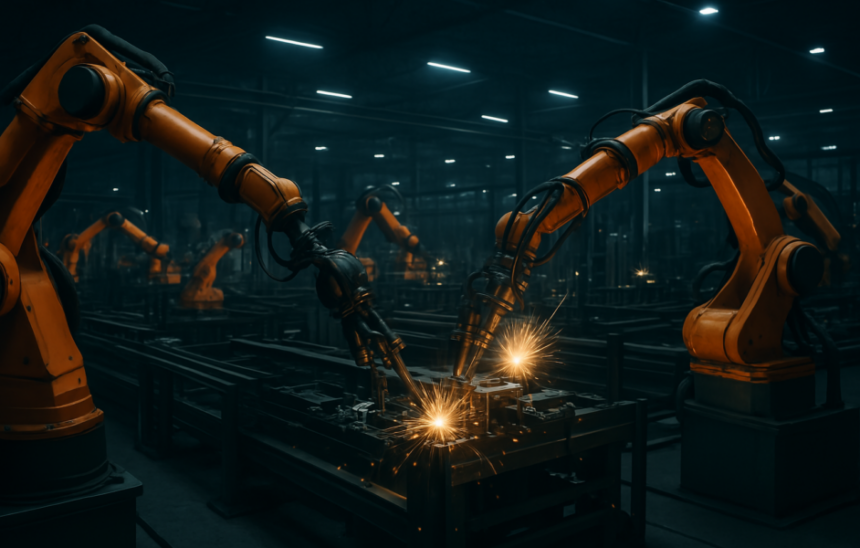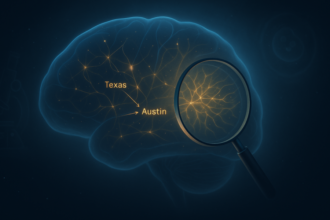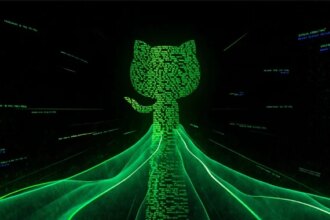In today’s rapidly changing industrial world, AI-driven automation is no longer part of the future. That’s happening now. One of the most notable examples of this transformation is the rise of dark factories in China. These advanced factories work perfectly without human workers and without traditional lighting. Instead, they rely on robotics and artificial intelligence to run 24/7.
Companies like Xiaomi are at the forefront of this transformation, increasing manufacturing efficiency and accuracy to new levels. However, as this technology continues to grow, it raises important questions about the future of work, the possibilities for work migration, and how society will adapt to this new approach to production.
What is a dark factory?
Dark factories are fully automated production facilities with no human workers. term Dark factory It comes from the fact that there are no humans on the factory floors, and these facilities do not require traditional lighting. Instead, advanced machines, AI systems, and robotics manage all aspects of production, including assembly, inspection, and logistics. This setup eliminates human error, reduces labor costs, and allows for continuous operation without breaks or fatigue.
Changping’s Xiaomi smart factory exemplifies this new manufacturing paradigm in China. The factory uses AI and robotics to produce one smartphone per second, achieving excellent efficiency and accuracy. Xiaomi has invested approximately $330 million in the facility. The facility spans 81,000 square meters and has 10 million devices annually production capacity. The factory integrates its own development AI systems for real-time monitoring and automatic maintenance such as dust removal.
China’s broader advances towards automation are in line with China’s 2025 strategy aimed at establishing the country as a global leader in high-tech manufacturing. In 2022 alone, China installed 290,367 industrial robots, accounting for 52% of the world’s total, according to the International Federation of Robotics (IFR). This reflects China’s commitment to leveraging AI and robotics to transform its manufacturing sector.
In China, the rise of dark factories powered by automation and artificial intelligence has revolutionized manufacturing processes and supports China’s broader environmental goals. Integrating AI and robotics into these factories is expected to significantly improve energy efficiency. Automation helps streamline operations, reducing the need for human-centered infrastructure such as lighting, heating and destruction areas, and ultimately reduces energy consumption. This is in line with China’s carbon neutrality target for 2060, as automation in an industrial environment is a key factor in improving overall energy efficiency across the sector.
The rise of AI-driven automation in China
China has become a global leader in industrial automation, based on its efforts to adopt advanced technologies such as AI, robotics and smart manufacturing. The government has invested heavily in these sectors, boosting the country’s manufacturing capabilities and maintaining competitiveness in the rapidly changing global market.
As of 2023, China’s robot density reached 470 robots per 10,000 manufacturing workers, significantly higher than the global average of 162 robots per 10,000 employees. Companies like Foxconn and BYD are leading this transformation. For example, Foxconn replaced 60,000 workers at its Kunshan factory in 2016 with robots, already automating 30% of its operations. Similarly, BYD, a major electric vehicle manufacturer, uses robots to assemble EV batteries and chassis at deep Shenzhen and Xi’an factories.
This shift is supported by key government investments. In 2023 alone, China spent $1.4 billion on research and development in robotics, accelerating the movement towards automation.
However, rapid adoption of automation raises concerns, particularly regarding unemployment. Manufacturing now employs more than 100 million people in China, and many of these jobs can be replaced by robots. A 2017 Oxford Economics report predicts that by 2030, 12 million manufacturing jobs in China could be lost to robots. This presents a major challenge as it may not have the skills to move into a new role in the evolving economy.
Adapt to the future of work: The impact of AI-driven automation on work
Dark factories are becoming one of the most prominent signs of AI-driven automation where human workers are completely replaced by machines and AI systems. These fully automated factories operate 24/7 without lighting or human intervention, transforming industry worldwide. China is taking the lead in implementing dark factories, but this transformation is happening around the world in electronics, automotive manufacturing and customer service. Companies such as Xiaomi and Foxconn use AI and robotics to improve efficiency, reduce labor costs and operate continuously without human workers.
One of the most important consequences of this automation is job movement. Many manufacturing, logistics and customer service workers risk losing their jobs as machines take over tasks once done by humans. The World Economic Forum predicts that by 2027, automation could potentially lose up to 83 million jobs, especially in assembly lines and warehouses.
Automation eliminates some work, but also creates new opportunities. The roles of AI programming, robot maintenance and data analysis are expected to grow. The World Economic Forum predicts that 69 million new jobs will be created in areas such as green energy and technology by 2027. However, the key challenge is ensuring workers move into these new roles. This requires significant investments in education and retraining programs to ensure workers can acquire the skills they need for an AI-driven economy.
One of the biggest challenges of this transition is the skill gap. As automation grows, many workers must be retrained for new roles. For example, work that requires physical labor will be replaced by machines, but jobs that require creativity, problem-solving, and technical expertise will become even more important. To ensure workers can succeed, businesses and governments need to invest in training programs to acquire these new skills.
The future of work could include machines that work with humans. Robots and AI handle repetitive tasks, but jobs that require creativity, emotional intelligence and decision-making still require humans. Governments and businesses need to focus on education and training programs that will help workers learn to work with AI to ensure a smooth transition to this new way of working. Investing in these programs will help workers be prepared for change and thrive in an AI-driven economy.
Conclusion
AI-driven automation is transforming the manufacturing industry, especially in dark factories in China. These advancements provide significant benefits of efficiency and cost reduction, but raise important concerns about employment displacements, skills gaps, and social inequality. As automation continues to grow, it is essential that businesses, governments and workers work together to find solutions that ensure profits are shared fairly.
The future of work requires a balance between technological advancement and human potential. By focusing on workers’ reskills, promoting AI ethics and encouraging cooperation between humans and machines, we can ensure that automation will strengthen human labor rather than replacing it.









